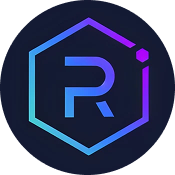In the vast universe of blockchain technology, Waves and Synthetix stand out as exemplars of innovation, each carving a unique niche—Waves as a versatile platform for decentralized applications and smart contracts, and Synthetix as a powerhouse for synthetic assets and derivatives trading. While Waves emphasizes speed, usability, and enterprise-ready features, Synthetix focuses on enabling complex financial instruments through decentralized derivatives. Their core functionalities, governance structures, and target audiences reveal contrasting visions for the future of decentralized finance and blockchain utility. This detailed comparison aims to dissect their technological architectures, market positioning, and use cases to help enthusiasts and investors understand their strengths, limitations, and potential trajectories.
Short on time? Jump to Waves vs Synthetix Comparison
Understanding Waves and Synthetix ?
Waves is a community-driven, open-source blockchain platform launched in 2016, designed to facilitate the development of decentralized applications, smart contracts, and digital assets. It boasts an innovative consensus mechanism called WavesNG, which aims to maximize throughput and network speed, making it suitable for enterprise adoption and DeFi applications. Waves' native token, WAVES, is used for transactions, staking, and governance, with a focus on low-cost, high-speed transactions supported by fixed fees and smart contract capabilities. Its ecosystem includes decentralized exchanges, NFT platforms, and DeFi tools, all built to enhance usability and interoperability across various blockchain networks.
Synthetix, on the other hand, is a protocol dedicated to the issuance and trading of synthetic assets—tokens that represent real-world assets like stocks, commodities, or fiat currencies—using blockchain technology. Built on Ethereum, Synthetix leverages oracles such as Chainlink to track external asset prices, enabling decentralized derivatives trading and perpetual futures markets. Its governance revolves around the SNX token, which serves both as collateral and a governance stake. The protocol’s latest iteration, Synthetix V3, introduces a modular architecture supporting multiple collateral types and enhanced scalability, positioning itself as a leading platform for decentralized finance (DeFi) derivatives, with a focus on liquidity, security, and user engagement.
Both platforms have evolved significantly since their inception—Waves emphasizing speed, ease of development, and enterprise features, and Synthetix pioneering synthetic assets and derivatives markets in a decentralized manner. Understanding their foundational differences provides insight into their respective roles within the blockchain ecosystem, as well as their growth potential amid competitive DeFi landscapes.
This comparison will analyze their technical architectures, market metrics, use cases, and strategic developments, offering a comprehensive view tailored to crypto enthusiasts and investors aiming to harness their unique capabilities for future growth.
Key Differences Between Waves and Synthetix
Core Functionality
- Waves: Waves is primarily designed as a versatile blockchain platform facilitating the creation of decentralized applications, smart contracts, and digital assets, emphasizing speed, usability, and enterprise adoption. Its architecture supports fast transactions with fixed fees and a built-in governance model, making it suitable for diverse applications ranging from NFTs to DeFi services. Waves' blockchain employs WavesNG, which enhances network throughput and reduces latency, supporting high transaction volumes essential for scalable enterprise solutions.
- Synthetix: Synthetix functions as a decentralized derivatives protocol that enables the creation and trading of synthetic assets—tokens that mirror the value of external assets. Its core use case is providing a platform for trading synthetic assets, futures, and leveraged tokens via a modular architecture supported by multiple collateral types. Synthetix’s focus is on enabling complex financial products within a decentralized environment, creating a robust ecosystem for DeFi derivatives trading with high liquidity and sophisticated risk management.
Technological Architecture
- Waves: Waves utilizes WavesNG, a leader block protocol that combines proof-of-stake with microblocks, significantly increasing transaction speed and reducing blockchain forks. It supports smart contracts written in RIDE, a domain-specific language designed for security and simplicity. Its interoperability features connect to various ecosystems, supporting cross-chain operations and NFTs, making it a flexible platform for developers and businesses.
- Synthetix: Synthetix’s architecture evolves through its V2 and V3 iterations. V3 introduces a modular, multi-collateral system supporting SNX, ETH, USDC, and yield assets, with improved scalability and security. It relies heavily on oracles for accurate asset price feeds and employs a staking mechanism where SNX tokens are collateralized to mint synthetic assets. This architecture supports decentralized governance, high liquidity, and complex trading functionalities, positioning Synthetix as a sophisticated financial protocol.
Market Position and Adoption
- Waves: Waves has established a strong presence with a broad ecosystem comprising DApps, NFTs, and DeFi tools. Its speed, low fees, and developer-friendly environment have driven adoption among small to medium enterprises and individual developers. The platform’s open-source nature and interoperability capabilities foster continuous growth and innovation, with a focus on enterprise use cases and community governance.
- Synthetix: Synthetix has become a leader in the decentralized derivatives space, particularly after the launch of V3 on Base. Its derivatives trading volume, especially in perpetual futures, has seen steady growth, supported by liquidity mining incentives and strategic integrations on Layer 2 solutions like Arbitrum. Despite a recent decline in overall trading volume, its focus on sophisticated traders and institutional participants positions it as a key player in DeFi derivatives markets.
Use Cases
- Waves: Waves caters to developers and businesses seeking to build scalable, customizable blockchain applications. Its ecosystem supports DeFi protocols, NFTs, token issuance, and cross-chain interoperability, making it suitable for a wide range of enterprise and community-driven projects. Waves’ staking and governance features also appeal to token holders aiming for passive income and participatory decision-making.
- Synthetix: Synthetix is tailored for traders and investors interested in synthetic assets and derivatives trading. Its platform enables access to a broad spectrum of financial instruments, including spot, futures, and leveraged tokens, all decentralized and trustless. Institutional traders and DeFi users leverage Synthetix’s liquidity, high leverage options, and integrated oracles for hedging, speculation, and portfolio diversification.
Token Utility and Economics
- Waves: WAVES tokens are used for transaction fees, staking, and governance. The platform transitioned from a fixed supply to an inflationary model, enabling ongoing block rewards and network incentives. WAVES is also central to the platform’s ecosystem development, incentivizing participation and governance voting, with a focus on maintaining low transaction costs and high throughput.
- Synthetix: SNX tokens serve as collateral and governance tokens within the Synthetix ecosystem. They are used to mint synthetic assets and participate in protocol governance. The recent shift to a deflationary model—by burning SNX from fees—aims to increase token scarcity and value. The token’s utility extends to staking rewards, liquidity incentives, and ecosystem governance, aligning user incentives with protocol health.
Waves vs Synthetix Comparison
| Feature | ✅ Waves | ✅ Synthetix |
|---|---|---|
| Primary Use Case | Decentralized application development, smart contracts, NFTs, DeFi | Synthetic assets issuance, derivatives trading, leverage products |
| Consensus Mechanism | WavesNG (proof-of-stake + microblocks) | Staking with SNX collateral, oracle-backed price feeds |
| Transaction Speed | Supports 1,000+ TPS, fixed low fees | High-frequency trading, V3 supports fast perp markets |
| Token Utility | Transaction fees, staking, governance | Collateral backing, governance, fee burns |
| Governance | On-chain via WAVES voting proposals | DAO-based, protocol upgrades through governance |
| Ecosystem Focus | Interoperability, enterprise solutions, NFTs | Financial derivatives, liquidity, high leverage trading |
Ideal For
Choose Waves: Developers, small to medium enterprises, NFT creators, DeFi enthusiasts seeking a scalable, versatile blockchain platform.
Choose Synthetix: Traders, institutional investors, and DeFi users interested in synthetic assets, derivatives, and high-leverage trading in a decentralized environment.
Conclusion: Waves vs Synthetix
Waves and Synthetix exemplify the diverse pathways blockchain technology can take—one emphasizing a versatile, developer-friendly platform capable of hosting a broad range of decentralized applications, and the other pioneering decentralized derivatives and synthetic assets for sophisticated financial trading. Waves offers a high-speed, low-cost environment ideal for enterprise adoption and innovative community projects, while Synthetix provides a specialized, liquidity-rich ecosystem for trading complex financial products with a focus on security and scalability through its modular architecture.
Choosing between Waves and Synthetix depends on the user’s goals—whether building scalable decentralized applications or engaging in advanced derivatives trading. Both platforms continue to evolve, with Waves expanding its ecosystem and interoperability, and Synthetix pushing the boundaries of DeFi derivatives. For investors and developers, understanding their core differences ensures better alignment with strategic objectives and risk appetite, positioning them to capitalize on the respective growth trajectories of these innovative protocols.





